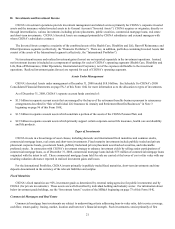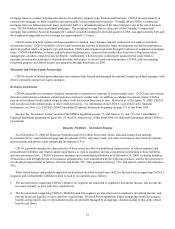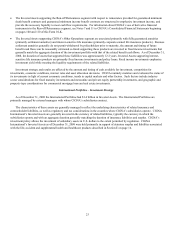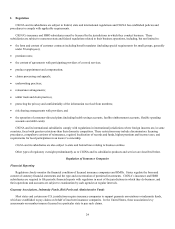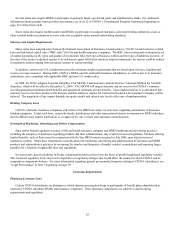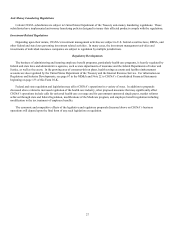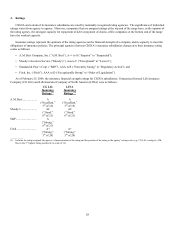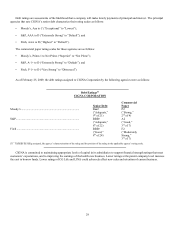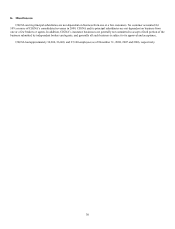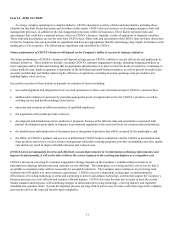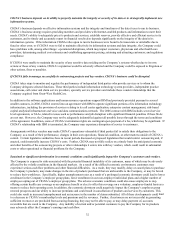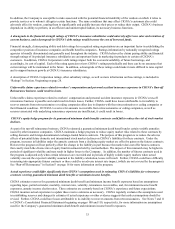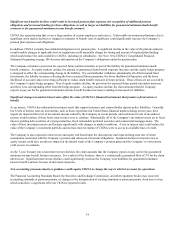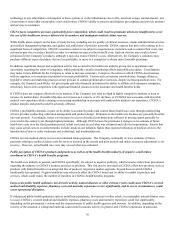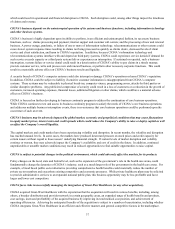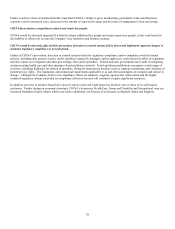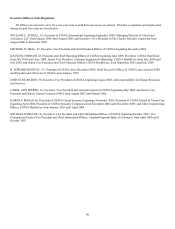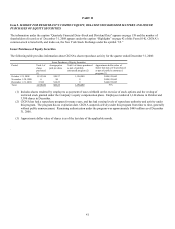Cigna 2008 Annual Report Download - page 51
Download and view the complete annual report
Please find page 51 of the 2008 Cigna annual report below. You can navigate through the pages in the report by either clicking on the pages listed below, or by using the keyword search tool below to find specific information within the annual report.31
Item 1A. RISK FACTORS
As a large company operating in a complex industry, CIGNA encounters a variety of risks and uncertainties including those
identified in this Risk Factor discussion and elsewhere in this report. CIGNA devotes resources to developing enterprise-wide risk
management processes, in addition to the risk management processes within its businesses. These factors represent risks and
uncertainties that could have a material adverse effect on CIGNA’s business, liquidity, results of operations or financial condition.
These risks and uncertainties are not the only ones CIGNA faces. Other risks and uncertainties that CIGNA does not know about now,
or that the Company does not now think are significant and does not appropriately identify and manage, may impair its business or the
trading price of its securities. The following are significant risks identified by CIGNA.
Future performance of CIGNA's business will depend on the Company’s ability to execute its strategic initiatives.
The future performance of CIGNA’s business will depend in large part on CIGNA’s ability to execute effectively and implement its
strategic initiatives. These initiatives include: executing CIGNA's customer engagement strategy, including designing products to
meet emerging market trends and ensuring that an appropriate infrastructure is in place to meet the needs of customers; continuing to
reduce medical costs; market expansion, in particular in the individual and small business markets, as well as growth in medical and
specialty membership; and further improving the efficiency of operations, including lowering operating costs per member and
enabling higher value services.
Successful execution of these initiatives depends on a number of factors including:
• successful alignment and integration of services and operations to reduce costs and retain and grow CIGNA’s customer base;
• addition and retention of customers by providing appropriate levels of support and service for CIGNA’s products, as well as
avoiding service and health coaching related errors;
• attraction and retention of sufficient numbers of qualified employees;
• the negotiation of favorable provider contracts;
• development and introduction of new products or programs, because of the inherent risks and uncertainties associated with
product development, particularly in response to government regulation or the increased focus on consumer directed products;
• the identification and introduction of the proper mix or integration of products that will be accepted by the marketplace; and
• the ability of CIGNA’s products and services to differentiate CIGNA from its competitors and for CIGNA to demonstrate that
these products and services (such as disease management and health coaching programs, provider credentialing and other quality
care initiatives) result in improved health outcomes and reduced costs.
If CIGNA does not adequately invest in and effectively execute improvements in its information technology infrastructure and
improve its functionality, it will not be able to deliver the service required in the evolving marketplace at a competitive cost.
CIGNA's success in executing its consumer engagement strategy depends on the Company’s continued improvements to its
information technology infrastructure and customer service offerings. The marketplace is evolving and the level of service that is
acceptable to customers today will not necessarily be acceptable tomorrow. The Company must continue to invest in long term
solutions that will enable it to meet customer expectations. CIGNA's success is dependent, in large part, on maintaining the
effectiveness of existing technology systems and continuing to deliver and enhance technology systems that support the Company’s
business processes in a cost-efficient and resource-efficient manner. CIGNA also must develop new systems to meet the current
market standard and keep pace with continuing changes in information processing technology, evolving industry and regulatory
standards and customer needs. System development projects are long term in nature, may be more costly than expected to complete,
and may not deliver the expected benefits upon completion.


